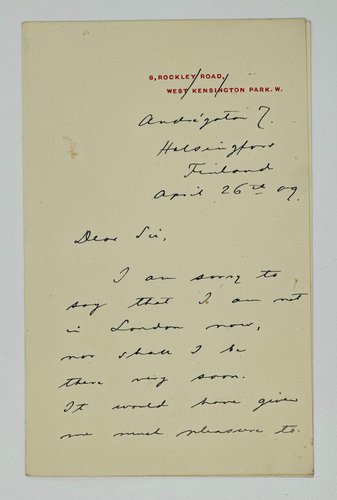



























#PC68
Ca. 1890s.
Twenty-five loose card sheets, all ca. 24,5x32 cm (9 ½ x 12 ½ in) or slightly smaller. With twenty-six mounted original albumen photos, including three large images ca. 17,5x22,5 cm (6 ¾ x 8 ¾ in) or slightly smaller; most photos are from ca. 12,5x17 cm (4 ¾ x 6 ¾ in) to ca. 11x14,5 cm (4 ½ x 5 ¾ in); two small photos are ca. 7,5x10 cm (3x4 in). All but four images (including two small photos mounted on the same sheet) are with period manuscript ink captions in French on the mounts. The sheet with two small images has a period ink stamp “G. Warenhorst” on recto. Mounts soiled and age-toned, with occasional water stains, small holes in the corners or minor tears or losses on extremities; a few photos with varying degrees of fading, but overall a very good collection of early large rare photos.
Historically significant collection of large early, rare original photos of the premises and operations of “Compagnie Commerciale et Agricole de la Casamance” in French Senegal. In 1890-1898, the company was granted the right to exploit the Casamance consession, which included the entire territory between the Casamance River and the border between French Senegal and Portuguese Guinea (now Guinea-Bissau). The company “was guaranteed freedom to “… carry out the necessary deforestation, to create new plantations and, in general, to assure the mise en valeur of the territories conceded.” The concession also provided for full ownership of the forests and land ultimately developed. In January 1890, Albert Cousin founded the Compagnie Commerciale et Agricole de la Casamance, capitalized at 800,000 francs. In a short period of time, the Compagnie Commerciale et Agricole de al Casamance increased its operations (a 2 million franc capital in 1891) and showed a profit in its most important exports: rubber and groundnuts. This was also true for its wax, ivory, skins and wood production” (Lagana, M. Eugene Etienne and the Economics of Empire// Proceedings of the Meeting of the French Colonial Historical Society. Vol. 3 (1978), pp. 141-142).
The photos were most likely taken during the 1888 expedition to delineate the border between French Senegal and Portuguese Guinea, led by a French military officer and African explorer, Henri Brosselard-Faidherbe. A leaf with two smaller views of native thatched-roof houses bears an ink stamp of Brosselard-Faidherbe’s companion, George Warenhorst, who in 1891 published a description of the Casamance concession (Warenhorst, G. La Casamance (Cote occidentale d’Afrique). Paris, 1891; see more). Six five images from the collection were reproduced in Brosselard-Faidherbe’s work on the region (Brosselard-Faidherbe, H. Casamance et Mellacorée, pénétration au Soudan. Paris, 1892; source): Carabane. Commencement du grand Warf (Direction) (see p. 12); Une rue à Ziginchor (p. 16); “Factorerie No. 1 de la Compagnie de la Casamance à Sédhiou” (p. 25, our image uncaptioned); Sédhiou. Factorerie de la Compagnie (Opération Centrale) (p. 28); “Féloupes du haut Songrogou” (p. 36, our image uncaptioned); Prairie à Djinicola (p. 54). Two views of the company’s premises in Sédhiou and a photo of a pasture in the Casamance region were also reproduced in Warenhorst’s account (Ibid., pp. 5, 11, 13).
The photos include early images of the Company’s headquarters and warehouses on the Carabane Island and several stations on the Casamance River (Ziguinchor, Mangacounda, Sédhiou, Karantaba). There are also photos of the Catholic mission on the Carabane Island and portraits of French customs officers, native workers and Diola people from the upper Soungrougrou River (a tributary of the Casamance).
Overall a historically important collection of early original photos of the Casamance River region, French colonial establishments and portraits of the native people.
A list of captions (all sheets with the general title “Compagnie Commerciale et Agricole de la Casamance” or its abridged versions): Factorerie de la Compagnie (Carabane); Carabane. Commencement du grand Warf (Direction); Galerie de la Factorerie Centrale (Direction). Carabane; Carabane. Cour d’une factorerie (Lavage des gaoutchoucs [sic!]); Carabane. Intérieur d’un Magasin de détail; Carabane. Intérieur d’un Magasin de Tissus (Assortiment des Trailants); Zéguinchor. Factorerie de la Cie - Embarquement des Arachides; Défrichements à Mangacounda; Défrichement - Mangacounda; Sédhiou. Warf de la Factorerie Centrale; Sédhiou. Factorerie de la Compagnie (Opération Centrale); Sédhiou. Cour d’une Factorerie; Sédhiou. Magasin dea Caoutchoucs; Construction d’une Factorerie; [A portrait of two native young men].
A list of captions (without the general title): Mission Catholique à Carabane; Une rue à Ziginchor; Casamance. Carabane. Bureau et Habitation des Agents Douaniers de la Casamance (Les Recettes faites par ce Bureau dépassent annuellement: 200,000 francs); Embarcadére de Karantaba (Hte Casamance). Ville sainte des Mandigues; Casamance. Prairie à Djinicola; Chef Manœuvre. Me Forgeron, Me Mennisier, Me Voilier, Mennisier; Samuel Lisk [crossed out and changed to another name in pencil], traitant et sa famille.



































